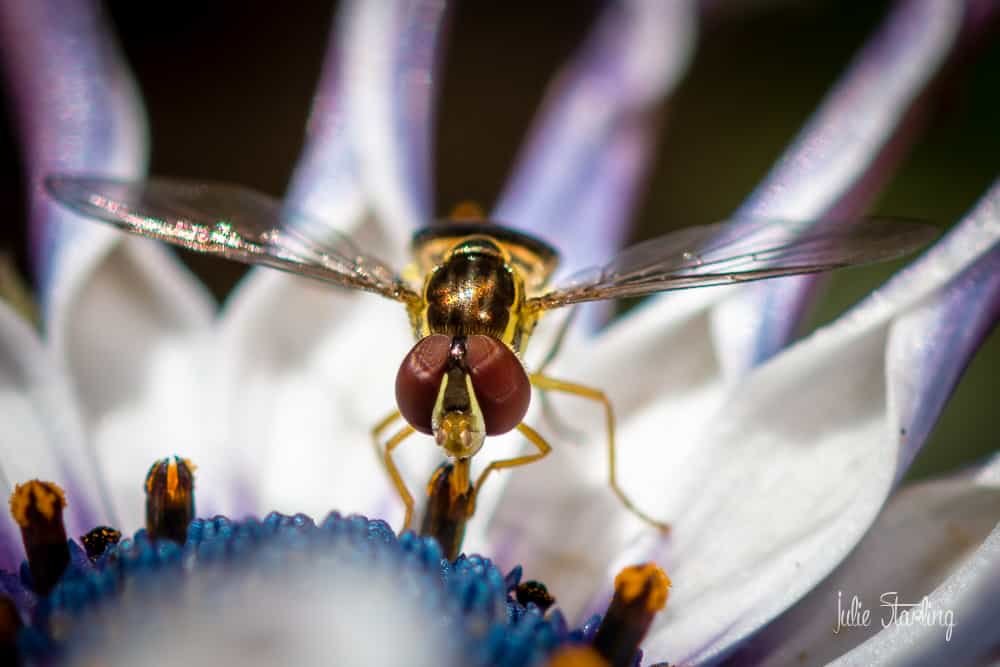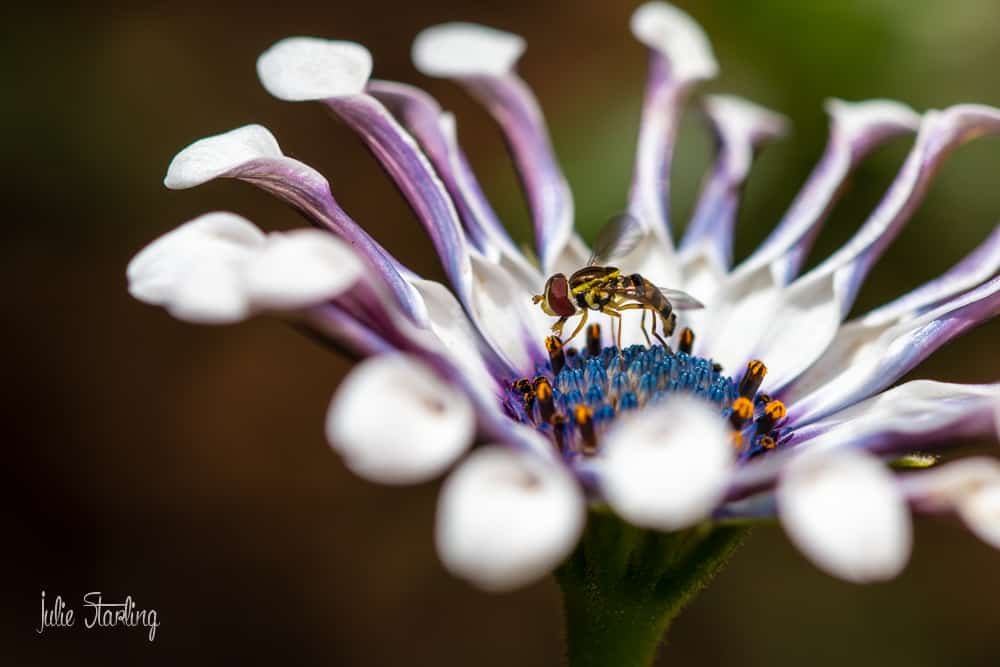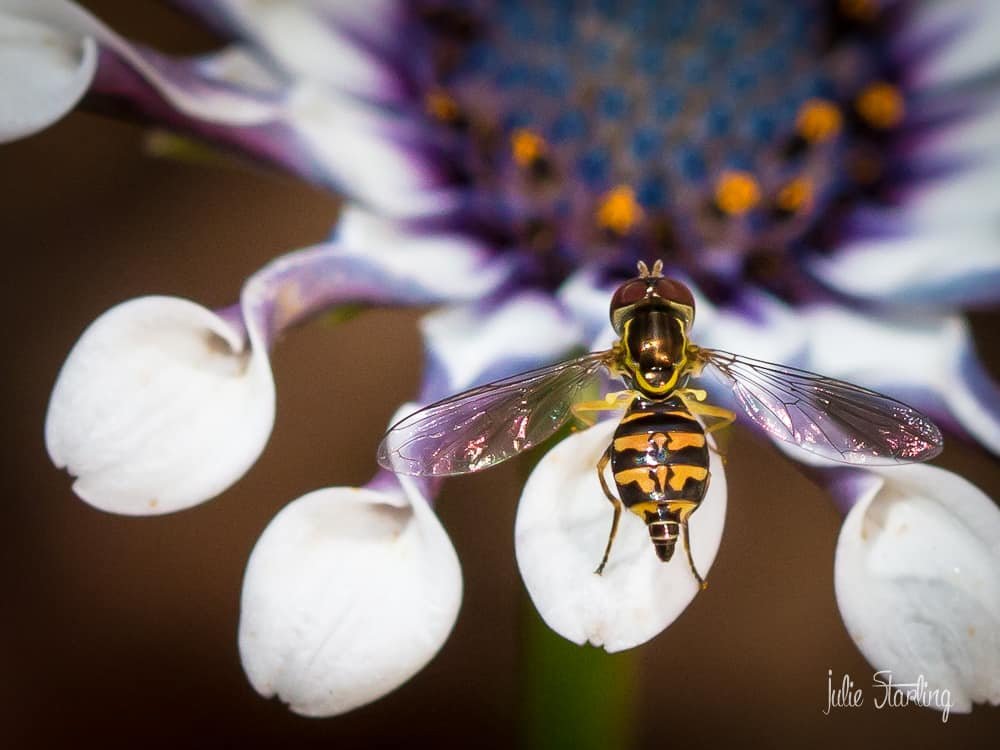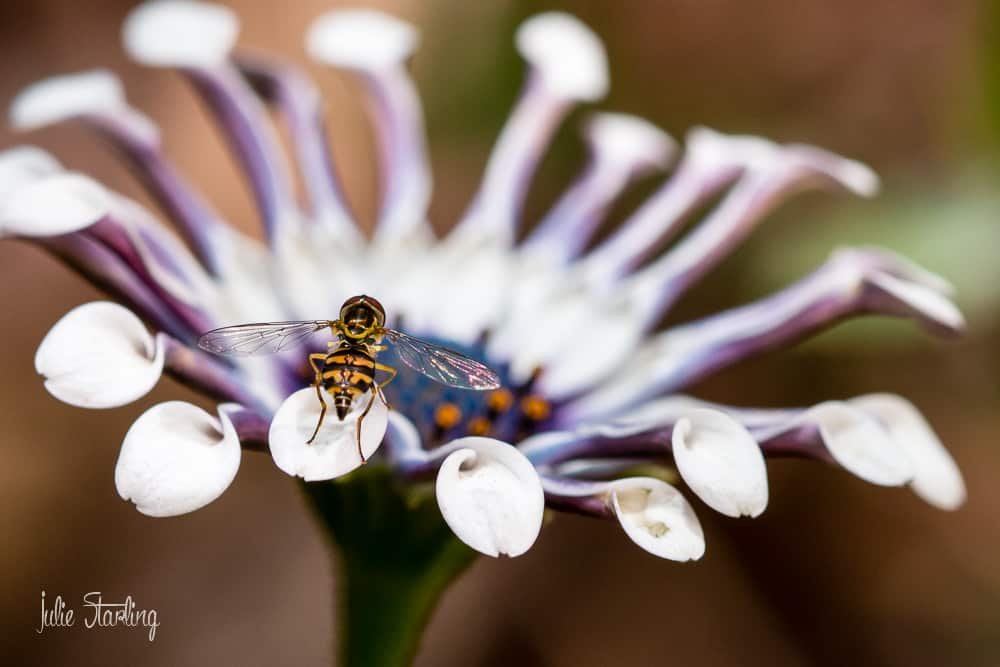Meet Heloise, the adult female hoverfly or flower fly of the family Syrphidae. Hoverflies get their name from how they hover in midair. Known as the helicopter of flying insects, they are able to dart quickly, fly backwards, and come to hover again. Sizes of hoverflies vary from small, long and slender, like Heloise here, to large, round and hairy. Heloise is roughly 6-7 mm in size, so she is teeny tiny.
I found her pollinating the African Daisy Spoon petal plant, which graced me with a second round of blooms this year. This plant sees a lot of action!
How do I know Heloise is female? I've been known to be wrong a lot when it comes to bugs but from what I've read, female eyes of a hoverfly are smaller and farther apart and male eyes are bigger and come close at the top of the head, joining together. I'm guessing Heloise is female from the size and location of her lovely eyes.
Hoverlfies are a gardener's superhero. Small, light and incredibly good at keeping bad guys away while encouraging the prosperity of your favorite plants. The adults feed on pollen and the larvae eat decaying plants, aphids, thrips and plant sucking insects. A hoverfly's capabilities are rivaled only by the ladybird beetle and lacewings for their benefits to the garden. High populations of hoverflies can control 70-100% of aphid population! All this from an adorable creature whose life cycle lasts from 3 weeks in the summer to 9 weeks in the winter. As the great sage Billy Joel says, "Only the good die young."
There are 6000 species of the hoverfly, found everywhere but Antartica. I'm guessing Helloise here is Toxomerus marginatus by the markings on her back.
Though they look a lot like stinging insects such as bees or wasps, Hoverflies, being true flies, have only one set of wings unlike wasps and bees. They also have the characteristic halteres, or bulb-like organs that evolved from the second pair of flying wings. You can see them on Heloise in the middle below her wings, a pair of yellow bulbs extending from the body. Each wing has a characteristic fold, or "false vein" which can be visible to the naked eye - it is located anterior to the first large vein that runs all the way to the outer margin of the wing.
Even at their small size, you can easily tell the difference between a wasp and a hoverfly by it's flight pattern. If it's hovering and teeny, it's harmless. Remember, if you see them, let them be. They are the good guys!




